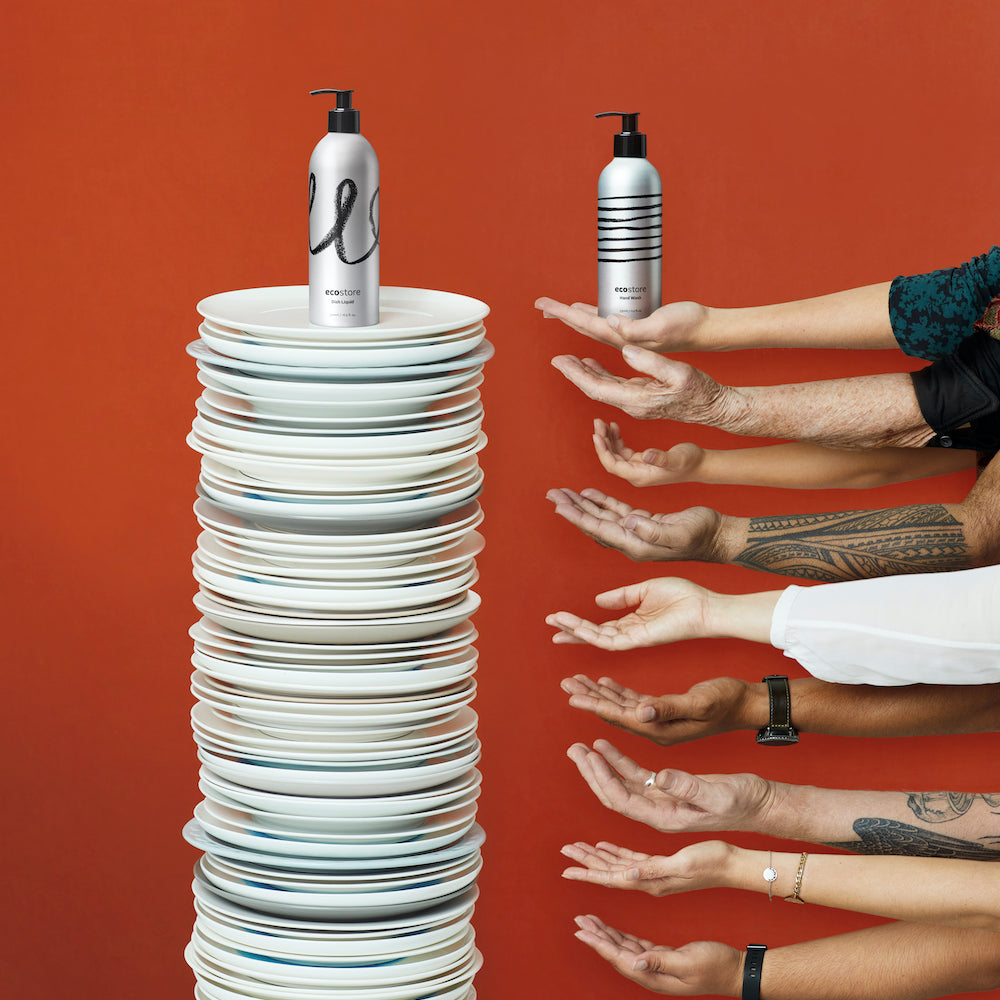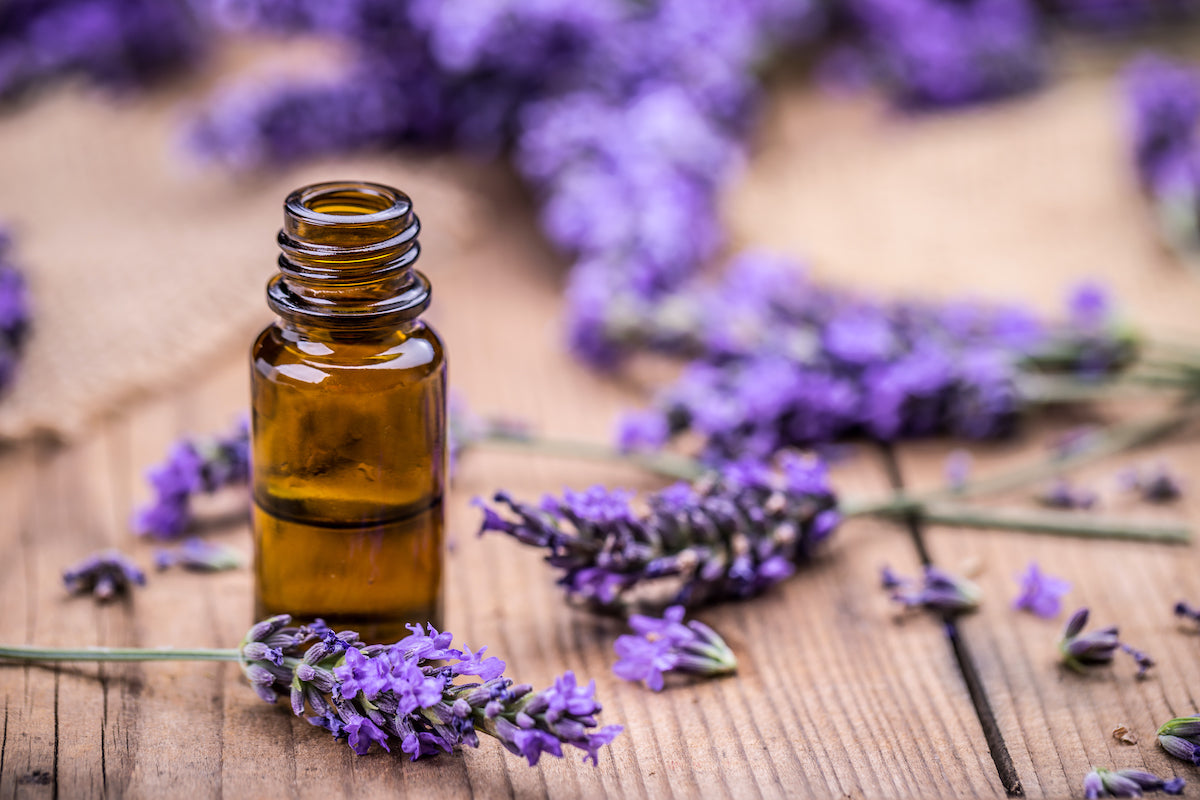As well as smelling good, many essential oils are loaded with benefits for everyday beauty, home care and wellbeing. But which essentials oils are the absolute (ahem) essentials? Here’s our break down of the must-have essential oils, and how to use them.
When selecting your oil repertoire, look for ‘pure’ essential oils - avoid perfume oils and blends that contain a carrier already - which won’t give you the same benefits. For a nourishing massage, try using a carrier oil like jojoba or avocado and dilute to 2% or less of your preferred essential oil or essential oil blend.
Lavender
Calming, relaxing, with a floral, herbal scent, Lavender is very most popular essential oil because of its versatility, and support for healthy relaxation and sleep. It’s so mild and calming, we use it in products across the ecostore Baby range. Smelling it can help to relieve a headache, while using lavender essential oil topically may help reduce itching and swelling from bug bites.
Safety: Generally safe, Lavender can cause some rare side effects, including skin irritation, nausea, headaches, chills, and vomiting.
Frankincense
Used extensively in perfumes, cosmetics and incense for millennia, Frankincense essential oil brings a calming sense as well as a beautiful, sophisticated woody scent. Use Frankincense essential oil for massage, and for grounding in meditation and yoga practices. As a skincare ingredient, it’s kind to dry skin and can reduce the look of wrinkles, age spots, and stretch marks.
Safety: Avoid ingesting Frankincense essential oil, and patch test before applying to skin.
Mānuka
Mānuka essential oil is a broad spectrum anti-inflammatory with amazing natural antibacterial, antiviral and antifungal properties. It’s also a useful decongestant, making Mānuka incredibly valuable for respiratory tract infections. As a healing antiseptic and antiviral, it can be applied directly to cuts, boils, mouth ulcers and cold sores.
Safety: Do not use Mānuka essential oil on babies or children younger than six. experience an allergy-like reaction to essential oils. Usually, this is caused by not diluting the oil you’re applying (or not diluting it enough). Make sure you look for the botanical name, Leptospermum scoparium when choosing your oil.
Roman Chamomile
Its light herbal-with-a-hint-of-apple and apple aroma can help to put your mind at ease. While this oil is great for calming the mind, it’s equally useful on the skin. It helps to relieve stress when use as a steam inhalation or in a diffuser, and can be calming on skin inflammation and eczema (patch test for sensitivity before use).
Safety: Avoid using Roman Chamomile essential oil if you’re allergic to marigolds, ragweed or daisies.
Rose
Inhaling the sweet, classic floral scent of rose essential oil can help to soothe away anxiety. As a classic scent, Rose is a lovely addition to a diffuser. Its antioxidant properties can also help to soothe acne and rejuvenate the complexion over time.
Safety: Skin irritation can occur when used topically, so make sure to use plenty of the carrier oil if you want to reap the skincare benefits of Rose essential oil.
Lemon
Lemon is an uplifting, nontoxic essential oil that’s incredibly useful around the home (and why we include it in many ecostore homecare products). Try it in a diffuser, particularly when someone is sick.
Safety: Take care when applying lemon essential oil topically, as it may cause photosensitivity. Stay out of sunlight for a couple of hours, and use in very small concentrations.
Eucalyptus
Eucalyptus is a powerful expectorant with a long track record of efficacy and safety for respiratory support. Eucalyptus is highly antibacterial, antiviral, and antifungal - making it great for soothing cold and flu symptoms. As a bonus, it even relieves achy muscles and joints.
Safety: Take care when using eucalyptus, especially the species highest in the chemical eucalyptol (1,8-cineole) around little ones. For this reason, it’s a good idea to look for oil from Eucalyptus radiata or Eucalyptus smithii rather than the common Eucalyptus globulus.
Peppermint
Peppermint essential oil is energising and uplifting. It’s probably best known for its analgesic ability to soothe headaches when diluted and applied topically, but its antispasmodic, carminative (gas reducing) actions support digestion too. Peppermint is also decongestant and expectorant, making it a great partner to eucalyptus. It offers some antimicrobial effect, especially when combined with essential oils like Mānuka.
Safety: It’s best avoided with babies and young children. Use Peppermint essential oil too often, and you may become sensitised - always dilute properly and stick to safe levels.
Safety first
If you’re new to the fragrant world of essential oils, there are a few things to remember to keep you and your family safe:
- When applying essential oils topically or adding them to a bath, always use a carrier oil - like almond, coconut, olive or jojoba – to dilute the oil and prevent skin irritation.
- Always do a small patch test a few hours before applying essential oils to your skin for the first time.
- Some essential oils are toxic and shouldn’t be ingested unless recommended specifically by a healthcare professional.
- Apply extra caution if using essential oils while pregnant. Debra Raybern’s book Gentle Babies: Essential Oils and Natural Remedies for Pregnancy, Childbirth, Infants and Young Children introduces therapeutic-grade essential oils, when to dilute them, and which are safe for kids and babies.
- If you’re on medication, search for known contraindications to using essential oils, and have a conversation with a qualified aromatherapist if you’re unsure.
Read more

I love the buzz of the festive season - the socialising, the onset of summer weather, the palpable pre-holiday excitement. But there are a few things that the festive season brings that I’m not suc...

REFILL STATIONS Saves 40 Plastic Dish Liquid bottles / 60 Plastic Hand Wash bottles Specialty Grocers - Because we use large 20 litre containers at our Refill Stations, by refilling the same...






